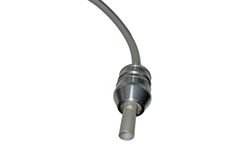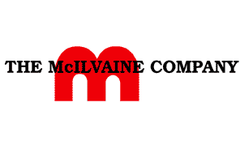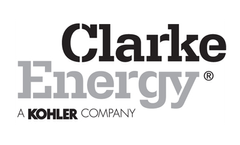Gas Turbine Vs Reciprocating Gas Engines Articles & Analysis
17 articles found
When it comes to generating power, two popular technologies come to mind: gas turbines and reciprocating gas engines. Both have their strengths and weaknesses, and the right choice depends on your specific power needs. Whether you're looking for a solution for a large-scale power plant or backup power for an industrial facility, it's important to understand the differences between these two ...
Guidetubes are a great accessory for your 4mm borescopes. The combination of borescopes and guidetubes allow you to inspect turbines without taking apart said turbine. They’re essential for directing borescopes into specific areas during the inspection process, and with the use of articulating borescopes, they’re perfect for snaking through tight spaces and around corners. Most ...
Introduction The basis of modern oil analysis programs is the use of optical emission spectroscopy (OES) to measure the ppm (parts per million) levels of wear metals, contaminants, and additives in oil samples. Whatever an oil lab may need to measure, multi-elemental analysis is the core of an in-service oil analysis program. This paper gives an overview of Rotating Disc Electrode Optical ...
Siloxane is a chemical compound present in numerous industrial and consumer products such as shampoo, cosmetics and detergents. Siloxanes are present in biogas produced in landfill and wastewater plants and cause significant gas engine breakdown and maintenance related ...
The available information on combustion, flow control, treatment and environmental compliance for gas turbines and reciprocating engines is doubling every few years. It is now more challenging than climbing Mt. Everest to find the most current and relevant information. Rapid developments include zero liquid discharge (ZLD) technologies, repairable valves, high efficiency air inlet filters, ...
I. Introduction Smaller frontal area and high thrust to weight ratios of mixed flow compressor stage has resulted in its application for small gas turbine engines in aviation sector [1] . The efficiency and reliability of the compressor depends to a great extent on flow behavior in its flow passage and its interaction between impeller and diffuser. The complex turning of the flow not only in the ...
Possible performance enhancement of small gas turbine power plants through the application of thermoacoustic systems is examined. The thermoacoustic subsystem is powered only by the waste heat of the gas turbine. Two different gas turbine configurations are considered: a Thermoacoustic refrigerator assisted gas turbine (TRG) and a Combined thermoacoustic heat pump and refrigeration assisted gas ...
Diesel dispersion is the viscous, hardly evaporated combustible liquid received from oil kerosene-gasoil fractions, by their distillation. It is applied generally, as fuel for trucks, cars, railway transport, a water transport, and also agricultural machinery. All scope of diesel fuel usage is very wide. Diesel dispersion is one of the most demanded light oil products today. This fuel is intended ...
Diesel fuel is a liquid product which is used as fuel in the diesel engine. It is received by oil distillation from kerosene and gas-oil fractions. It represents quite viscous and difficult evaporated combustible liquid. Generally it consists of carbons, some percentage of hydrogen, oxygen, sulfur and nitrogen. Such type of fuels is intended for high-speed diesel and gas-turbine engines of land ...
In 2012, Cofely’s Picardie branch, the site’s exploiter, entrusted the renovation of a cogeneration installation in Saint Quentin, in the Aisne province, to Clarke Energy. Initially, this “boiler room” consisted of a turbine installed in a soundproof enclosure. Cofely could either renovate the existing turbine, or replace it with a gas engine. Cofely’s main ...
Diesel dispersion is the viscous, hardly evaporated combustible liquid received from oil kerosene-gasoil fractions, by their distillation. It is applied generally, as fuel for trucks, cars, railway transport, a water transport, and also agricultural machinery. All scope of diesel fuel usage is very wide. Diesel dispersion is one of the most demanded light oil products today. This fuel is ...
Diesel fuel is a liquid product which is used as fuel in the diesel engine. It is received by oil distillation from kerosene and gas-oil fractions. It represents quite viscous and difficult evaporated combustible liquid. Generally it consists of carbons, some percentage of hydrogen, oxygen, sulfur and nitrogen. Such type of fuels is intended for high-speed diesel and gas-turbine engines of land ...
The United States Naval Ship (USNS) Watson is one of the large, medium-speed, roll-on, roll-off ships that have significantly expanded the nation’s sealift capacity. The Watson has a considerable amount of machinery, including main engines, generators and cranes, that need oil tested on a regular basis to detect potential problems and eliminate the possibility of a catastrophic failure. ...
A number of factors, including the availability of an energy market, project costs, potential revenue sources, and other technical considerations, can determine which technologies are most appropriate for a particular landfill gas-to-energy (LFGE) project. Technologies for converting LFG into energy include the following. Electricity Generation Approximately 70 percent of the LFGE projects ...
In this paper, the Greenhouse Gas (GHG) emissions from an uncontrolled landfill site filled with Municipal Solid Waste (MSW) are compared with those from controlled sites in which collected Landfill Gases (LFG) are utilised by various technologies. These technologies include flaring, conventional electricity generation technologies such as Internal Combustion Engine (ICE) and Gas Turbine (GT) and ...
Flameless combustion has been acknowledged as one of the most interesting combustion technologies to meet both the targets of high process efficiency and low pollutant emissions. The present investigation is concerned with the application of the flameless combustion mode to an adiabatic combustor, typically used in gas turbine engines. Detailed chemical kinetics calculations, by means of a ...
In CHP plants without heat rejection facilities power, output is complementary to the recovery of heat, and all activity is cogeneration. CHP plants with heat rejection facilities can operate a mix of cogeneration and condensing activities. Quantifying the energy flows of both activities properly requires knowledge of the design power-to-heat ratios of the CHP processes (steam and gas turbines, ...










